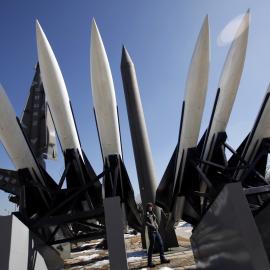Fred Kaplan (“Rethinking Nuclear Policy,” September/October 2016) rightly argues that “the United States stands on the precipice of another nuclear debate,” as its leaders confront major decisions about how to modernize its nuclear forces. But his closing argument is misleading. Kaplan claims that “no civilian officials have scrutinized the U.S. nuclear war plan . . . since the review of a quarter century ago”; he concludes that “it’s long past time” for the government to review its approach to nuclear weapons, “scouring the war plan clean, as if there were no nuclear weapons at all, then building it up from scratch, based on a rational assessment of how many are needed, to do what.”
Yet this was precisely the approach President Barack Obama’s administration took in 2011, when we, together with a small group of senior civilian officials from outside the Department of Defense, worked with U.S. Strategic Command to review the country’s nuclear weapons targeting requirements. This process, which took lessons from reviews led by senior civilians in previous administrations, assessed the security environment and proposed corresponding national objectives. It provided Obama with a range of options, some involving significant departures from current policy.
From these options, the president selected an evolutionary approach, including negotiated reductions in deployed weapons (up to one third below the levels outlined in the 2010 New start treaty) and a lesser emphasis on preparations for a surprise attack, but, at the same time, a continuation of the Cold War nuclear triad. No doubt some, presumably including Kaplan, would have preferred a more radical departure from past U.S. strategy. But we believe that Obama’s choice was sensible; in any event, it did not suffer from a lack of civilian attention.
